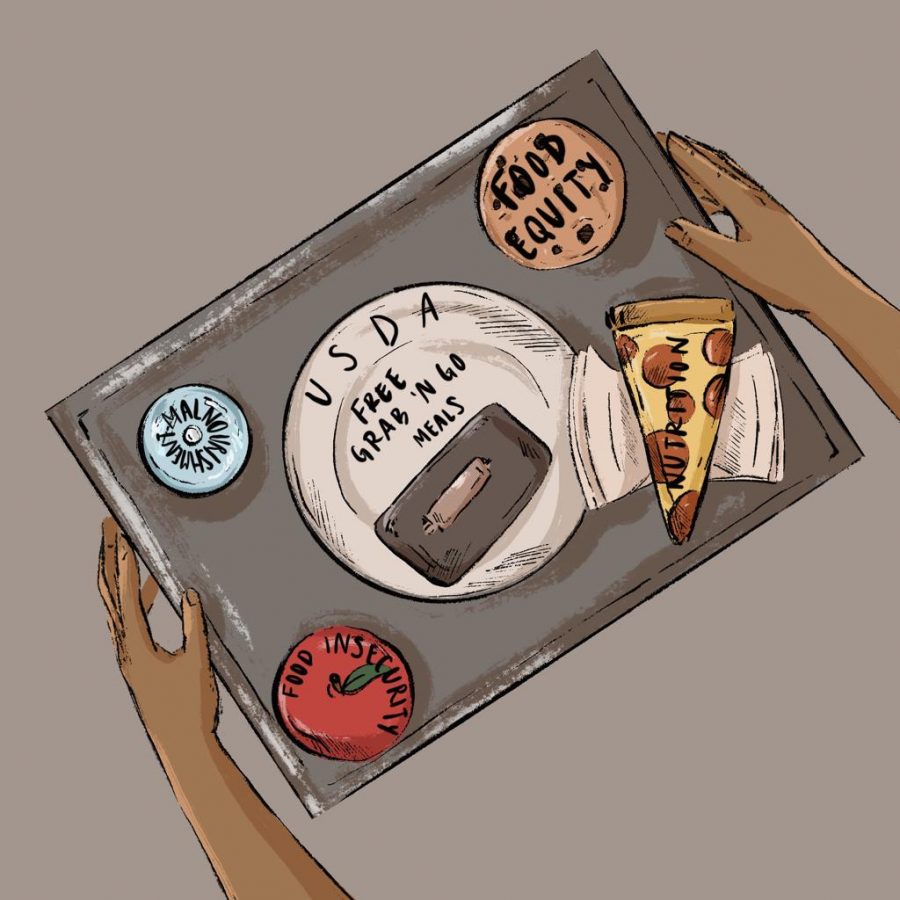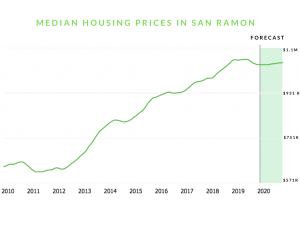USDA provides waivers for free school lunches: A victory for food equity
February 12, 2021
Since President Harry Truman signed the National School Lunches Act in 1946, activists and child nutritionists alike have pushed for the government to bolster food services in an attempt to allow students access to meals regardless of income. Unexpectedly, it seems that COVID-19 serves as the catalyst for school lunch reform in both the nation and our community.
To keep children fed during the entire year, the United States Department of Agriculture (USDA) provides waivers to schools such as the Summer Food Service and Food Box Aid Program. These waivers allow schools to have more flexibility in how they provide food to students. Mike Buzalka of Food Management, a news site that covers noncommercial foodservice, says that some of the waivers “allow meals to be served in all areas and at no cost, permit meals to be served outside of typically required group settings and mealtimes and it waives meal pattern requirements if necessary to allow parents or guardians to pick up meals.”
The pandemic has made these waivers even more essential to keeping America’s kids fed. In a report for the Brookings Institute, Lauren Bauer, who researches social and safety net policies, found that the food crisis has been exacerbated by the dangers of the pandemic.
“About half of [families] whose children did not have sufficient food were not earning sufficient pay to meet the basic needs of their household. Another quarter either lost their job or was temporarily not at work due to the pandemic.”
Until 2019, only five percent of households with children under the age of 18 were on the food insecurity spectrum. However, since COVID-19 hit the nation, that line has jumped up to 16 percent. As a result, Bauer concludes that “13.9 million children lived in a household characterized by child food insecurity [as of June 2020], 5.6 times as many as in all of 2018 (2.5 million) and 2.7 times as many than did at the peak of the Great Recession in 2008.”
As an attempt to reduce the rampant food insecurity that has increased during the pandemic, Sonny Perdue, the US Secretary of Agriculture, announced on Aug. 31, 2020, that these waivers would be extended until Dec. 31 of 2021.
These waivers come at a time that feeding students has become more dire than ever. And these food programs are now assisting the country in two essential ways.
1.Nutrition and Food Insecurity
President Truman created school lunches during World War II with the intent of promoting national security, as soldiers were being rejected from the army due to childhood malnutrition. Since then, EducationBug corroborates that “more than 180 million lunches have been served to American children who attend either a public school or a non-profit private school.” However, malnutrition is still rampant. Regardless of whether we are fighting a world war or not, it’s a problem that needs solving.
In fact, according to a study by Northwestern University, almost one in four children experienced food insecurity last year, a number that will only continue to grow as the pandemic continues.
As Chandana Maitra finds in a study for the University of Sydney, food insecurity is a strong potential risk factor for malnutrition. When malnutrition occurs, it causes a host of health consequences, both mentally and physically. These include heart failure, muscle tenderness, low blood pressure, shrinkage of the digestive system tract, and an increased chance of bacterial growth in the intestine. It can also deteriorate heart and kidney function and impair the immune system. Maitra thus concludes that these conditions can result in students being more likely to report an absence from being ill.
Luckily, providing school lunches can prevent this. A study by Campbellsville University finds that school lunches can prevent nutritional deficiencies and provide protein, which positively affects the cognitive development of children. Not only that, “access to proper nutrition can help students maintain psychosocial well-being and reduce aggression,” allowing students to avoid discipline and suspension. This is empirically proven to be effective as children who consistently ate a nutritious breakfast had an increase of 17.5 percent on their standardized math scores, better memory and concentration, and an overall increased success rate in academics compared to children who missed breakfast.
Miguel Villarreal, the Director of Child Nutrition and Warehouse for the San Ramon Valley Unified School District (SRVUSD) confirms this, analogizing the necessity of books to education and how food plays a similar role in public schools.
“Food should be treated the same way [as books] and honestly if you ask me, a nutritionist, food should be at the top of that list [of priorities for students]. It should have been at the top of our list all along. Food is fundamental to everything that we do. Before we do anything, we’ve got to feed ourselves throughout the day for us to continue.”
2.Food equity
Food equity is defined as a concept where everyone can grow and consume healthy and affordable food. People can grow, procure, barter, trade, sell and dispose of food in a way that prioritizes culture, equitable access to land, fair and equitable prices and wages, human health, and ecological sustainability. Yet we are far from this utopian ideal.
According to the Office of Disease Prevention and Health Promotion, in 2016, 31.6 percent of low-income households were food insecure compared to the national average: one of the many reasons being farmers’ lack of access to land.
Since 1982, over 23 million acres of farmland have been lost to commercial businesses. 83 percent of all food is dictated by large agri-businesses. Due to the high prices of food, many people on the lower end of the socio-economic ladder aren’t able to afford food for their day-to-day life. According to the Washington Post, people on the lower end of the socio-economic ladder were six points lower on the median body mass index than people on the upper end of the socio-economic ladder.
Even more worrisome is the lack of attention given to food inequity. In a study for the Drexel University, Mariana Chilton explains that even though the Centers for Disease Control and Prevention (CDC) has made a framework attempting to reduce food insecurity by half, there have been no significant changes to food insecurity since annual measurements of food equity were started in 1995.
This lack of attention to food inequity can be attributed to the stereotypes around it, as Elena David for the Samuel Centre for Social Connectedness writes that, “Often, the issue of hunger is considered in relation to the plight of economically disadvantaged nations — something that occurs outside of our own borders, save a handful of our poorest citizens”
David continues, “Stigma, shame, and isolation act to keep hunger sealed away within households, leaving the sheer number of citizens who are deprived of a basic need outside of the public consciousness.”
This results in politicians taking little to no action, dismissing the issue in favor of others that they believe take priority.
In fact, when tensions were high between Hillary Clinton and Donald Trump in 2016, one of the least prioritized topics was food even though it was one of the leading economic issues at the time. According to Matt Birong, a Democratic delegate from Vermont, food wasn’t necessarily a topic that a lot of politicians paid attention to.
“For the national delegation, it might come up as a sidebar conversation for a few of us, but as far as a functional initiative, it has never been approached,” he says.
However, this problem of food inequity might not be so unsolvable, especially if the focus of the nation is shifted to inequity. Villarreal stresses the importance of prioritizing food equity, explaining that before getting his first job in child nutrition, he “had never even tied the word equity to food.” However, this connection is essential to ensure food equity is put first.
How the problem affects the San Ramon Valley Unified School District
To provide students with access to nutritious meals, the San Ramon Valley Unified School District has been giving free meals to students with the “Free Grab and Go Meals” program. (Information regarding where to pick up food, times to pick up, the menu, and more can be found on the website.)
The district started the program in March 2020 after receiving a USDA waiver when the COVID-19 pandemic began. The program continued throughout the summer and will continue to serve families in the district until June 30, 2021.
“There has been funding that has been provided for every single child under the age of 18 whether they are in school or not to provide meals to families, so this isn’t for just families who are in need. It’s for all of us,” Christine Offerman, principal of Bollinger Canyon Elementary School, explained.
The program has helped numerous students in the district so far. Villarreal quantifies that when the pandemic initially struck, about 1200 students were being served every day. However, “When school started and they expanded the waiver program, that number went to about 1500 a day during the first week of school.” The numbers have continued to grow, “slowly increasing to about 3000 [students a day],” which corresponds to almost 6000 meals being served.
Despite this large number, Villarreal continues that more families and students could be taking advantage of the program. He explains, “right now, we are only serving 10 percent of the [district’s] population.”
Families—not just students— are in need of these meals too, as a report published by the California Association of Food Banks quantifies that in Contra Costa Country as of October 2020, 20.2 percent of residents are food insecure. Furthermore, 281 households in San Ramon in 2019 reported relying on the Supplemental Nutrition Assistance Program (SNAP), a welfare program that provides food stamps.
But, the driving reason many don’t receive these free meals in SRVUSD is due to the stigma surrounding them. Villarreal explains that “What I have always known about this program is just because meals are available, doesn’t mean that a student is going to participate.”
Villarreal furthers that in SRVUSD, “When [parents in our district] think about public schools, we have no inhibitions about sending our kids. None. We’re not thinking well it’s only for those who can’t afford private school. It’s available because we pay for it. But when it comes to food, people think that it’s only for those who can’t afford it.”
This stigma against free lunches exists across the nation as well and affects the ability of students to get the nutrition they need. A study for the Ford Foundation, an organization with the mission to advance human welfare, found that one-third of students eligible for free or reduced meals skip lunch at school due to shame and fear of being embarrassed in front of their peers.
Future Steps
Fortunately, these stigmas that stand as a barrier to food equity can be broken down with the cooperation of families and students. As Villarreal puts it, “We have to change the mindset of our culture.”
It does seem in some ways the country is making a shift towards prioritizing nutrition. In April of 2020, the cover of the Time magazine monthly issue featured an image of six food service employees as a part of a series of magazines targeted at recognizing frontline heroes. Edward Felsenthal, the CEO and Editor-in-Chief of Time explains that the “cover of the magazine features the ‘most influential’ people who help shape the world such as heads of state, titans of industry and icons of culture.”
Villarreal shared his excitement, saying, “For the first time, these are child nutrition employees on the cover of ‘Time’ magazine recognized as first responders and essential workers.”
Recognizing the importance of child nutritionists and school lunches is just the first step though. In SRVUSD, the solution is to fight this stigma, and for families to support and take part in the Grab and Go Meals. If this happens the program will continue expanding, as Offerman says, “I want to encourage all of you to participate in this. The more that we participate, the bigger it gets, and coming to get meals supports the program.”
This applies to districts across the country as well. Stopping the stigma around free meals will ensure students get the nutrition they require no matter who they are. As Villarreal puts it, “Every child deserves an opportunity to be fed and be served the best foods that are available.”







